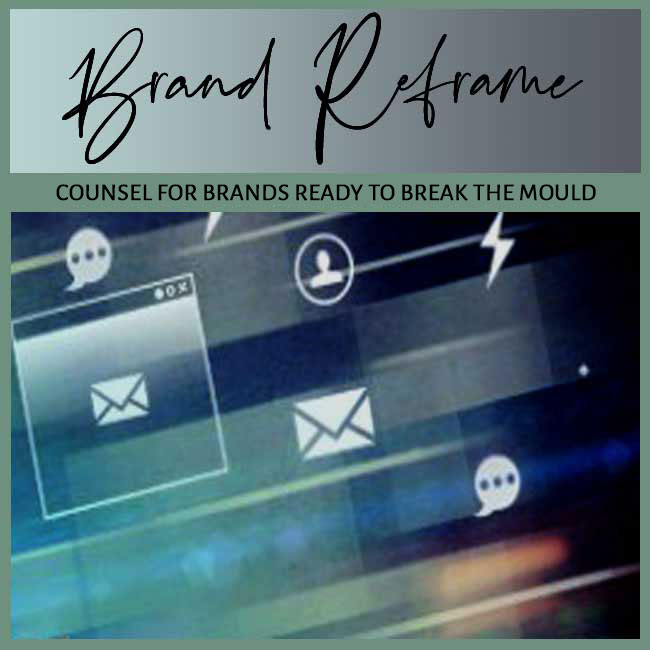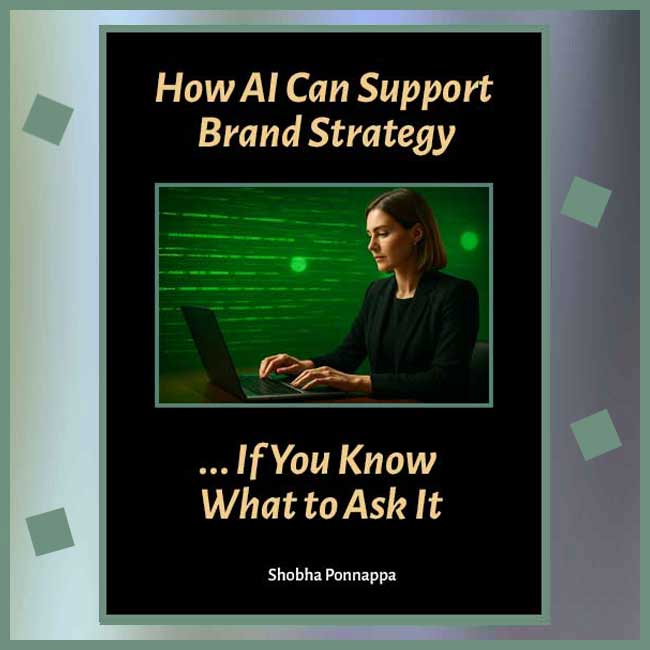
FOCUS: BRAND DRIFT PROBLEMS | AUDIENCE: STEWARDS OF PLATEAUED BRANDS
BY: SHOBHA PONNAPPA | BRAND BREAKTHROUGH STRATEGIST | 45 YEARS | 125+ CLIENTS
I answer 6 tough questions about why so many brands remain loyal to old practices that stall momentum … and how to replace them.
Many legacy brands I work with are stuck not because they’ve made poor choices, but because they’re still anchored to once-great ones. What worked beautifully a decade ago now feels inert, unresponsive, or out of sync. Their team is experienced. Their product is trusted. But their playbook hasn’t changed in years. In this post, I explore the most common questions I hear from such brands … and the critical mindset shifts they must make to move again.
Legacy habits often show up as unquestioned defaults. These might be old approval chains, long-form internal decks that delay action, or rigid campaign calendars that ignore real-time signals. While these habits once instilled rigour, they now produce institutional sluggishness.
When leaders say, “This is how we’ve always done it,” I know we’re looking at drift. These habits aren’t evil … they were earned over time. But they need reframing. Momentum today comes from adaptability, not tradition. The longer these patterns go unchecked, the more they silently erode a brand’s relevance.
Customers can sense when a brand is operating on autopilot. They may not know the internal mechanics, but they experience the result: recycled messaging, templated visuals, tone-deaf promotions, or slow engagement. All signs of a brand clinging to its past playbook.
In a market where newer entrants evolve daily, sticking to legacy rhythms makes your brand look slow, indifferent, or worse, irrelevant. And once perception shifts, regaining agility is twice as hard. This erosion of customer interest often happens long before sales numbers begin to drop.
They’re familiar. Safe. And they’ve worked before. The team defending these habits are usually the same people who helped build the brand’s early success. Letting go can feel like undoing their own legacy.
Also, these habits are often systematised. They live in meeting structures, incentive models, vendor choices, and internal language. Changing them feels like dismantling an identity rather than just updating a process. But unless the system evolves, the brand will be outpaced by faster, nimbler competitors.
Yes … but only if legacy is reframed as “ethos”, not method. A brand can preserve its core values while completely redesigning how it expresses and executes them. This is what I call strategy with reverence.
Some of the most successful momentum shifts I’ve led began with asking: “What part of our legacy is timeless … and what part needs to evolve?” Legacy can be your fuel, but not your frame. Innovation anchored in purpose is more potent than innovation clashing with pride.
The earliest signs are usually internal. Repetition in brainstorms. Fatigue in campaigns. Launches that feel safe or scripted. More checklists than curiosity. Then the external signs follow: lower engagement, fewer referrals, and confused positioning.
When teams say, “We need something fresh,” but keep approving the same kind of outputs … you’re watching momentum leak silently. Staleness isn’t a mood … it’s a symptom. And left unattended, it slowly becomes your brand’s new default setting.
Start with language. Words like “evolve,” “build upon,” and “refresh” signal continuity without threatening past contributions. Then move to pilot projects. Small experiments allow teams to try new rhythms without destabilising the whole.
Most importantly, acknowledge the emotional investment behind these habits. Honour the role they played. But make it clear: the future needs momentum-makers, not memorial-keepers. Replacing habits doesn’t mean forgetting the past … it means building a better future from it.
If these questions resonate, your brand might be operationally sound but strategically stalled. Legacy is valuable, but only when it’s dynamic. To break drift, you need to ask what habits still serve growth—and which now serve only comfort. If you’re serious about future traction, the shift must begin now.
If you’re an investor seeking momentum for your portfolio brands, this FAQ Insight Post I wrote could interest you: “FAQs: When Brand Clarity Gets Confused with Oversimplification.“
And if you’re a solo expert looking to sharpen traction, this FAQ Insight Post I worked on may resonate: “FAQs: Why Funnels May Convert Clicks but Not Conviction.“

"One BIG IDEA can turn brand stagnation into unstoppable movement. Spots are limited each week ... book your breakthrough session now."
Shobha Ponnappa
More Breakthrough Ideas … Case Studies & FAQs … from the Brand Drift Problems Category
Case Studies
FAQ Insights
Smart insights, real-world frameworks, and idea-driven clarity – designed to help brands move.
Get my fortnightly Brand Reframe newsletter. Smart insights, distilled thinking, and focused momentum to help your brand lead.

Get my free AI strategy guide. Smart prompts, sharper briefs, and practical ways to make AI support your brand momentum.

Just fill in the form to join. Get my newsletter and the guide shown alongside, all with several game-changing tips.